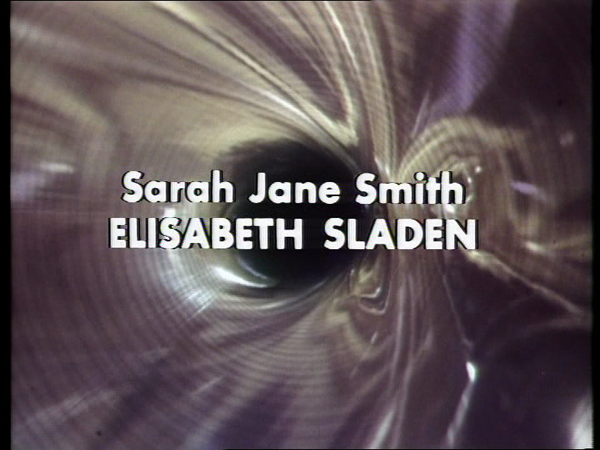My Sarah Jane
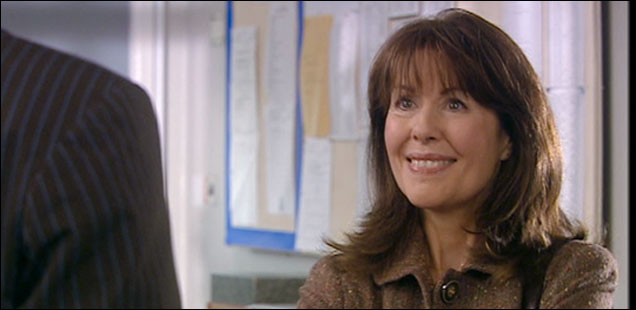
Lis Sladen as Sarah Jane Smith. My Sarah Jane.
I’ve had a blog running pretty much continuously since December 2002, but along the way, what with server and domain name moves and database wobbles and this and that, a few things have dropped off the internet along the way. One of those is a piece I wrote which talked about Elisabeth Sladen a couple of years after she died. What with today being the 9th anniversary of her passing, and the day that they released a specially-filmed “Farewell Sarah Jane” mini-episode, I though I’d put that right, and restore it to the internet. It was originally published 19 April 2013.
![]()
Sarah Jane Smith was my assistant. The person in the role of Doctor Who’s companion when I first fell in love with the show at an impressionable young age. It is now two years since the actress who portrayed her, Elisabeth Sladen, died. At the time I recorded the tribute programme to her broadcast a few days after her death. And then I couldn’t bring myself to watch it. Somehow watching it would mean she was really gone. Along with an animated Doctor Who adventure I’ve never quite finished, it has been at the top of my Sky+ menu for all that time.
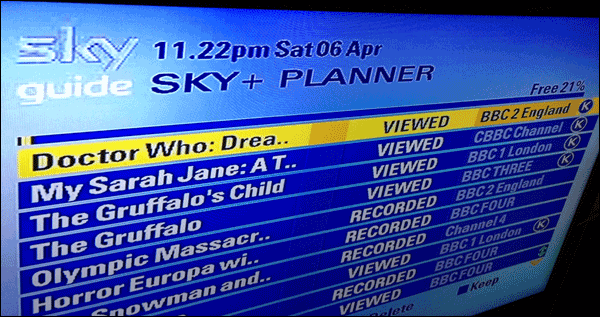
And then a few weeks ago I finally pressed play on it, and also decided to re-watch “School Reunion”, her re-introduction into the Doctor Who universe.
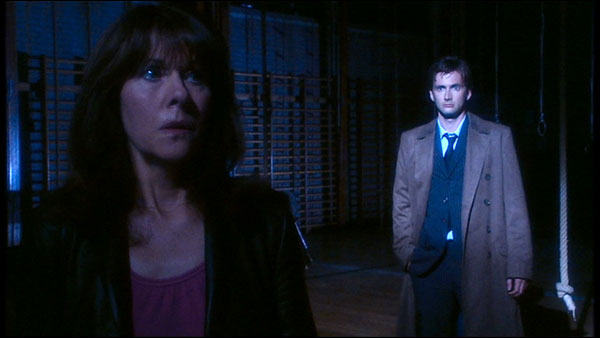
Sarah Jane Smith sees the TARDIS again for the first time in years
And it set in motion a whole train of thought about her, her character, the portrayal of technology in Doctor Who over the years, my own relationship with the series, and the inevitable march of wibbly-wobbly timey-wimey.
![]()
When I was editing the Guardian’s “Resurrection of the Doctor” book, I came across a lovely article by The Observer’s Rachel Cooke, written as Christopher Eccleston was about to take to our screens. What Rachel said about Elisabeth Sladen’s role stuck with me:
“I wanted to be a journalist from an early age. I was about six, I think, when I began begging for a John Bull printing set for Christmas, and not much older when I started publishing The Interest, a low-down sensationalist rag with a circulation of one. But when people ask me, as they occasionally do, where I got this idea — Fleet Street might have been a million miles from the city I grew up in — I never give an honest answer. Most often, I’ll try to be all clever and Proustian about it. I’ll describe the Sunday rustle of my parents’ newspapers, how I associated this both with secrets — knowledge to which I then had no access — and the comforting smell of roasting beef.
What drivel. In truth, I wanted to be a journalist because this was the profession of my childhood idol: Sarah Jane Smith, Doctor Who’s longest-serving and most glamorous companion. Sarah Jane — who was plucky and dry-witted, and who had a way of wearing lipgloss that made you long to be grown up — was a reporter on Metropolitan Magazine.”
Now, I can’t quite pin my career choices, which include journalism, at Sarah Jane Smith’s door. Though it must be said that part of the attraction of joining the BBC was to work where Doctor Who had been made. And it wasn’t that the Doctor’s companions hadn’t had believable back stories in the series previously — the original companions Barbara and Ian had been teachers after all — though it was a lot harder to picture astrophysicist from the future (Zoe) or Victorian orphan (Victoria) as viable career choices. But there was something about Sarah Jane Smith that you could readily identify with. Elisabeth always played her as someone who was plucky because you could see her overcoming her fear, not because she was just ferociously brave.
When he brought back the series, Russell T. Davies said to the Guardian’s Gareth McLean:
“When I was eight, walking home from school down Hendrefoilan Avenue, I always used to think ‘I could turn round the corner and the TARDIS would be there — and I would run inside and I would fight alongside the Doctor.’”
Sarah Jane Smith was the embodiment of that possibility for me when I was growing up.
My earliest memory of Doctor Who is the corpse of the Wirrn Queen tumbling out of a cupboard on board the Ark In Space. It was first transmitted in January 1975, starred Tom Baker, and featured Ian Marter as Harry Sullivan alongside Elisabeth Sladen.

Harry and the Doctor with the Wirrn corpse. My earliest Doctor Who memory.
Forensic analysis of Doctor Who scheduling during the seventies suggests I probably saw the repeat in the summer that year, at the age of four.
I’ve often wondered what possessed my parents to expose me to Doctor Who monsters at that age.
But now I have kids of my own I can see how easy it is to detect when my daughter has latched on to something that has caught her interest, and I can just imagine how my eyes must have lit up the first time I saw those amazing slit-scan opening credits and heard Delia Derbyshire and Ron Grainer’s astonishing theme music.
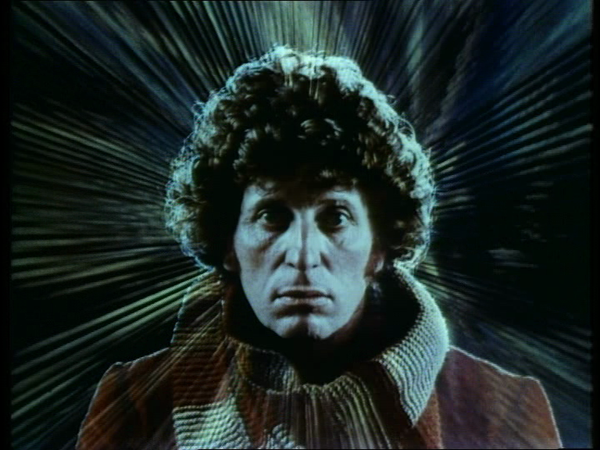
So when it was announced that Elisabeth Sladen was to return to the series and appear in a 2006 episode alongside Dave Tennant — and K-9 — I got all misty-eyed at the mere thought of it. And on a personal level, watching “School Reunion” back again the other week was a double dose of nostalgia. Not just for the show, but for the circumstances I had originally watched it in. Then I was living on Crete, and we had no internet at home. A friend was burning the episodes onto DVD and posting them to me, but I could see them even quicker via BitTorrent. I got into a routine of getting up early on a Sunday morning after the show had been broadcast in the UK, heading down into Chania, and going to an Internet cafe where I would stay until the new episode had downloaded. We then watched the show on my laptop. I still occasionally help seed a torrent of an episode shortly after transmission, knowing that I’m repaying the karma to some other desperate ex-pat out there.
But the thing that most struck me about watching “School Reunion” again was how old-fashioned it already looked. I’m not knocking the production, I love the script and I’ve enjoyed 94.5% of all “New Who” episodes immensely. But having watched The Bells of Saint John six days earlier, it felt sooooooooo slow. And it looked like television from the last decade.
Which, of course, it is.
The graphic design of the posters around the school, the look of the film, the haircuts on the school-children in the mass celebration at the end and the somewhat ropey nature of the explosion overlaid onto the building all, to my surprise, screamed out “old programme”. Seven years seems to have flown by.
It made me think about the equivalent gap in the series back from when I’d first seen Elisabeth Sladen in her role. In January 1968, seven years prior to Tom Baker taking on the Wirrn on Space Station Nerva, Patrick Troughton was in the middle of an adventure titled “The Enemy Of The World”. Nearly completely missing, I’ve never read the book, in the vague and unlikely hope that one day it will miraculously be restored to the archive in full, and I’ll be able to watch it “as new”. Episode 3, audio recordings and some telesnaps are all that survive of a story that saw Patrick Troughton in a double role, playing both the Doctor and the villain.
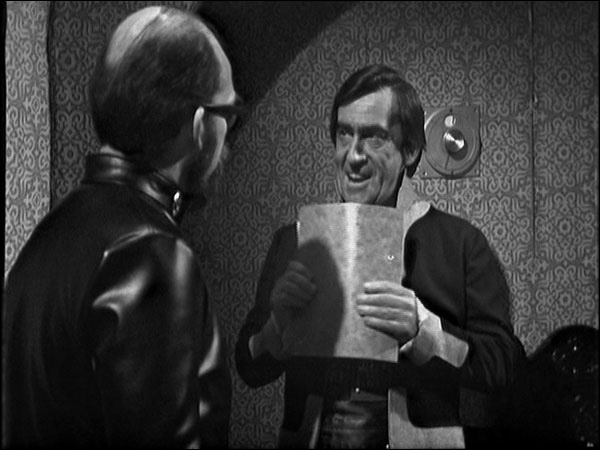
Patrick Troughton playing the Doctor’s
doppelgänger “Salamander” in The Enemy of the World
That seven year gap between 1968 and 1975 most notably saw a move from black and white to colour, and, as it happens, the surviving Episode 3 of the story was the first episode filmed on 625-line videotape rather than the previous 405-line standard. In the 2000s, that same time period has seen a leap from filming in standard definition to high-definition, and later this year we’ll have the second Doctor Who episode ever made in 3D. Not that many of us actually want to remember Dimensions In Time.
But it is the technology on display that most obviously dates “School Reunion”. Whenever it has been set, the technology shown in Doctor Who has always reflected the technology of the age it was made. In 1968 “The Enemy Of The World”, set in the near future, didn’t feature much technology on-screen in the opening episodes, save a mobile phone. The phones of the future were nothing like the black mirrors of today.
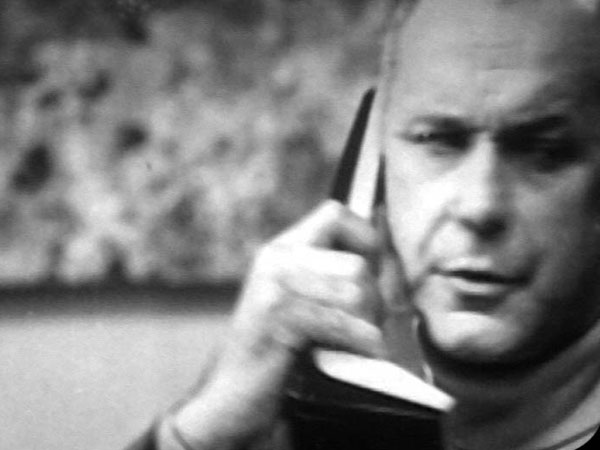
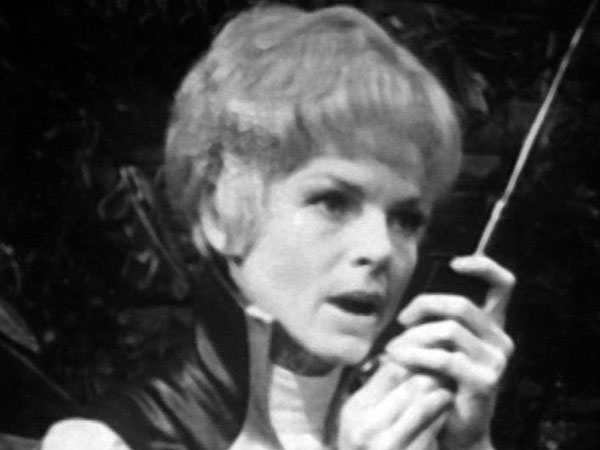
Futuristic comms tech in 1968’s “The Enemy of the World”
The Ark In Space was set even further into humanity’s future, the 30th century. The computers have a reassuringly chunky seventies mainframe look about them, and it is the computer set-ups that most drastically show the difference between Doctor Who made in 2006, and Doctor Who made in 2013. The Krillitanes in “School Reunion” are trying to crack the Skasis Paradigm with a room full of computers using massive CRT monitors. The contrast with 2013’s sleek flat-screen machines in the headquarters of the Great Intelligence in The Shard is huge.
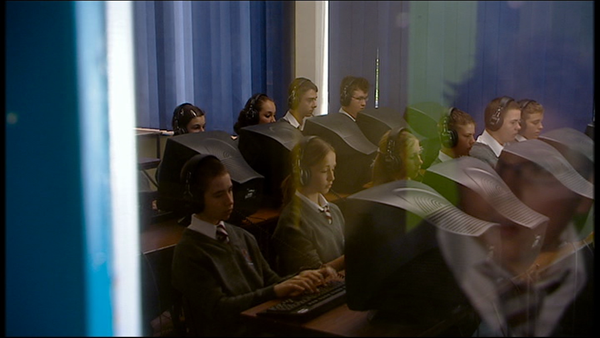
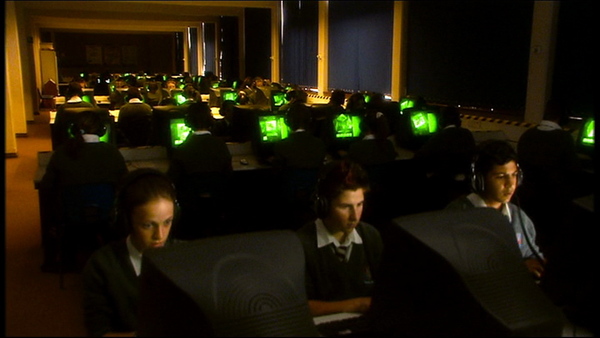
The computers on display in 2006’s “School Reunion”

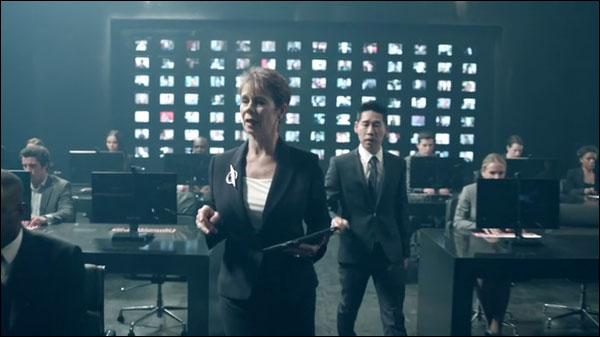
The computers in 2013’s “The Bells Of Saint John”
Likewise, the impact of mobile and touch technology in the last couple of years was embodied in the production of “The Bells Of Saint John”. The iPad has only been on the market for three years, and in the episode Miss Kizlet is seen confidently striding around her HQ controlling her operations from a tablet.
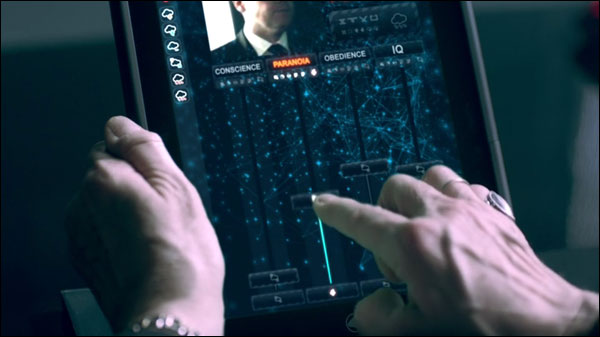
Miss Kizlet controls her staff from a touch-screen device
It isn’t that touchscreens haven’t been in sci-fi or fantasy before — 2001: A Space Odyssey famously features something that looks like an iPad — but in 2013 it seems obvious to the Doctor Who production team that she’d be using a tablet, in a way that didn’t seem obvious to earlier production teams. You only have to look at the PC on the desk behind Mr Wagner seven years ago.
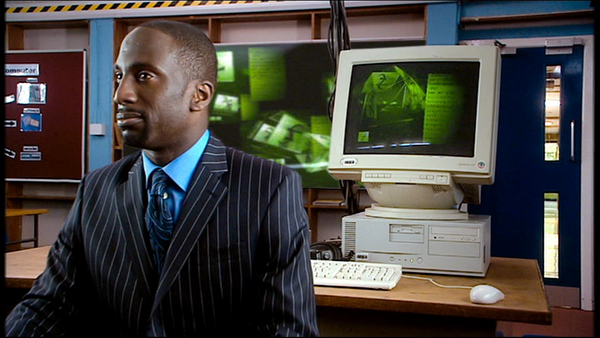
Mr Wagner has a chunky old PC at his disposal
And in seven years time? I’ll no doubt re-watch “The Bells Of Saint John” and feel incredibly nostalgic about the real-world computer GUIs on display during the episode.
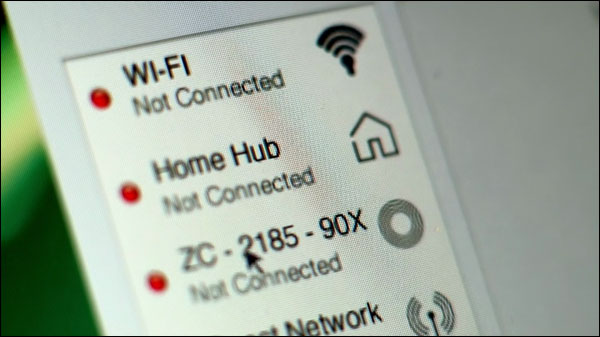

These shots are destined to make 2013’s Doctor Who look old-fashioned
![]()
There is a school of thought that Doctor Who was “better” in the 1960s and 1970s. These people are wrong. A campaign on Twitter argues it is “a friendly attempt to make the BBC aware of that fact and persuade them to make the necessary changes.” It is a futile and misplaced gesture. Television is a completely different beast in the 21st century. 1960s and 1970s Doctor Who is “different”, not “better”.
The team behind the online webcasts realised this during the early 2000s when they were making animated Doctor Who. Executive Producer James Goss said that when making the cartoons, the challenge was that a typical 25 minutes of “old” Doctor Who could be condensed into 5 minutes of modern television.
Take the recently broadcast “Cold War” on BBC One as an example. The pre-titles sequence establishes that we are on a Soviet nuclear sub under the Arctic at the height of the Cold War in the early 80s, that they have been drilling for oil, that they have found “something” in the ice and brought it on board, that the first office is a war-mongerer, and that one of the science officer’s sub-ordinates is too impatient to wait to get to Moscow before thawing the “something”. In 2013, from opening glacial sweep to the monster having a grip around a victim’s throat takes 2 minutes and 43 seconds of on-screen time. It sounds like the plot synopsis of an entire 25 minute Episode One in Patrick Troughton’s Era. Or possibly two.
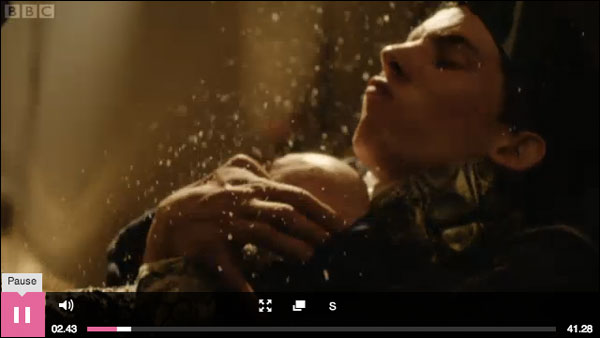
2 minutes and 43 seconds into “Cold War” on iPlayer
![]()
Fans complaining about the direction of the series these days seem to have lost touch with what made it special to them when they were growing up. As a kid, The Ark In Space appealed to me on an entirely different level to the way that Doctor Who appeals to me as a drama now that I’m in my forties — or indeed to the way that the X-Files or Buffy or Merlin have appealed over the years. It isn’t about loving the modern series uncritically, but about allowing it the space to be brilliant in the eyes of a six or seven year old.
When I saw Elisabeth Sladen in 1975’s “Brain of Morbius” fighting off a monster made up of a brain put inside stitched together body parts, I didn’t think, “Well, this is clearly gothic horror heavily influenced, if not frankly totally ripped off from, Mary Shelley.” Those complaining that “Cold War” ripped off “Alien” and “Aliens” should consider how many six or seven year olds got the references. Nothing the BBC can put on screen today can compete with your childhood memories.
Rachel Cooke realised that. Her article that said Sarah Jane Smith was at the root of her ambition to be a journalist also talked about re-watching “The Robots Of Death” on DVD:
“How slow the whole thing seems, and how silly the robots look in their Camilla Parker Bowles-style green quilted jackets. Their spaceship, moving slowly across a strange planet, looks like a Dinky toy being pushed through a sand pit. A human is murdered. The mark of his death? A small red reflector, exactly like one you’d see on the rear mudguard of a bicycle, is stuck to his hand. Good grief.”
This wasn’t just a bad review for the sake of it. Rachel touchingly talked of her father passing away, like Elisabeth Sladen, from cancer, and how, towards the end, her family had longed to re-create the experience of watching Doctor Who as they were growing up.
“Before Christmas, when it became clear that my father’s cancer was in its final stages, my brother went out and bought a Doctor Who DVD for us all to watch together. Dad was too ill, and the box went unopened. At the time, I cried about this: yet another injustice. Now I know better. Some things in life can’t ever be retrieved — an enjoyment of green robots in sequins and pedal pushers being one of them.”
![]()
When I was little, it felt like Doctor Who had been on for ever, and I’d missed most of it. My first memories of Jon Pertwee and Patrick Troughton and William Hartnell in the role are not from VHS or DVD, but from the Target novelisations. You used to enter Walthamstow Central library through a grand front door, and at the end of an imposing corridor was the children’s library. Right at the back was a set of shelves which had all the Doctor Who books on it. I’d wager I had at least one of those books out on rotation for years and years on end during the seventies. The Tenth Planet, The Dalek Invasion Of Earth, The Abominable Snowman, all of these exist vividly for me in the words of Gerry Davis, Terrence Dicks, et al. So whilst I didn’t see Elisabeth Sladen act against Jon Pertwee’s Doctor until The Five Doctors in 1983, I already knew their rapport from reading The Invasion Of Dinosaurs and Planet Of The Spiders.
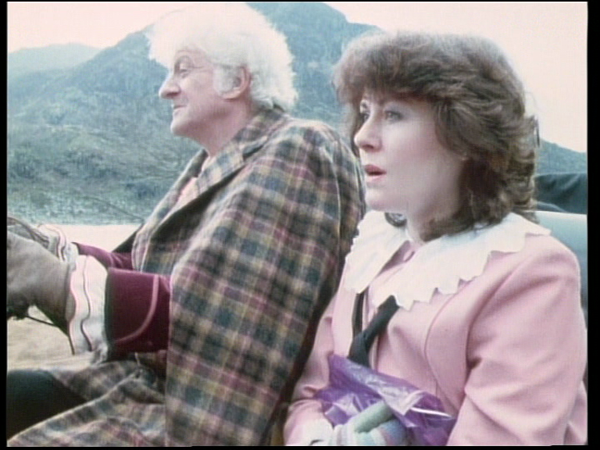
Jon Pertwee & Elisabeth Sladen in “The Five Doctors” in 1983
But now it is the fiftieth anniversary year of the series. I’ll be 42 by the time the November celebration rolls around. You can insert your own Douglas Adams-inspired punch line here if you wish.
It turns out that rather than having missed most of it, as it seemed when I was growing up, I’ve been alive for nearly all of the time that the programme has existed.
And so my mind turns to the 100th anniversary. Doctor Who is so cemented in British popular culture that I simply can’t imagine that November 23rd 2063 will go by unremarked upon. Whatever passes for TV channels by then, one of them will be showing An Unearthly Child, and The Three Doctors and The Five Doctors and whatever gets broadcast this November. Although probably not Dimensions In Time.
When the BBC first announced they were bringing Doctor Who back, I anticipated they’d make six to eight episodes at most for the first series, and that it might carry on for a couple of years. Now I’m convinced that Doctor Who will never end. Sure, this run might lose steam, and eventually fade out into a couple of special episodes a year until nobody really notices that it doesn’t get re-commissioned, but I’m sure it will come back again.
Just as a generation of media people who grew up watching Jon Pertwee and Tom Baker made a huge fuss when Chris Eccleston took to the screen in the role, in twenty-five years time I’m sure some TV exec somewhere will remember how much they enjoyed watching David Tennant when they were growing up, and think “Wouldn’t it be brilliant if we brought back Doctor Who again.”
I don’t know that I’ll get to see that 100th anniversary — I’d need to reach 92 myself. But my kids probably will. And in the same way that my dad enthused me with a love of Elvis and Creedence Clearwater Revival and The Rolling Stones that persists to this day, I expect my daughter and son will absorb a love of the Doctor through osmosis. Although she’s never seen an episode, toy Daleks, Cybermen and “the angry lady” — her name for a Weeping Angel — already regularly feature in my three year old’s games.
![]()
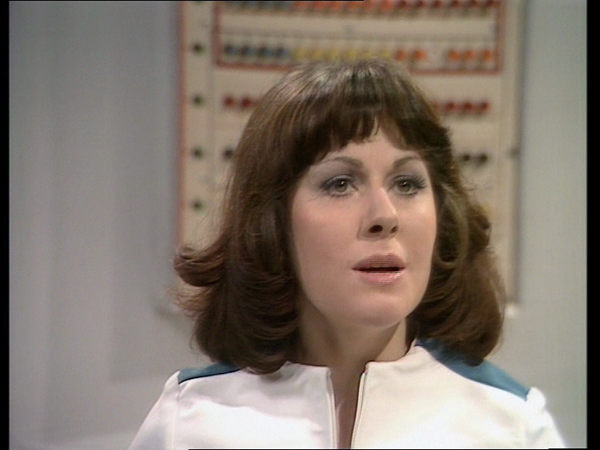
Elisabeth Sladen in “The Ark In Space”
It has got to be one of the best story-telling formats ever devised.
The magic man in the improbable blue box who can go anywhere, and anywhen, and have any adventure in time and space. And Sarah Jane Smith was a massive part in making that believable for me as a child.
Tom Baker will always be my childhood Doctor, all teeth and curls, mischievous grin and scarf.
But it was Elisabeth Sladen who introduced me to him.
Goodbye, Sarah Jane. And thank you, Elisabeth.
